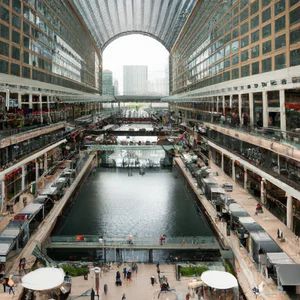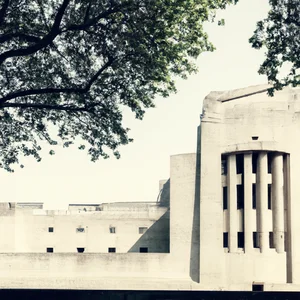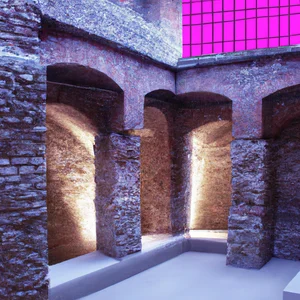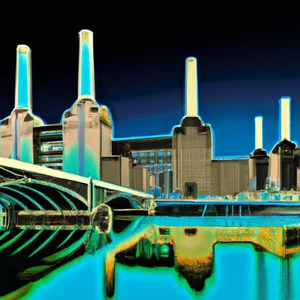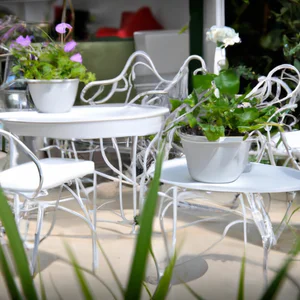Book your experience
Victoria and Albert Museum: the largest museum of decorative arts and design in the world
The Victoria and Albert Museum, or V&A as many call it, is truly an incredible place. I mean, we’re talking about the largest museum of decorative arts and design on the planet! It’s like a giant treasure chest, where you can find everything from fine art to jaw-dropping designer pieces.
The first time I went there, I got lost between the rooms, it was crazy! I saw works that seemed to come out of a dream, and each of them told a different story. Maybe I’m not 100% sure, but I think there are more than 2 million objects, stuff that will make your head spin! And the great thing is that every time you go back, you always find something new to discover.
Well, for example, I remember seeing a collection of historical clothes that almost seemed alive. There was one dress that honestly looked like it belonged on a real queen. It’s fascinating to think about how people dressed in the past, isn’t it? It’s as if they have an entire era within them.
The V&A is a place where creativity and history come together, and it’s also a bit like time travel. I don’t know, it seems to me that there is something magical in the air, especially when you stop to look at a work of art or a design, as if it transports you to another world. And, by the way, don’t forget to visit the garden! It is a corner of peace that almost seems like an oasis from the chaos of the city.
In short, if you are in the area, I recommend you stop by. And who knows? Maybe you too will get lost among the wonders of the V&A, just like I did.
Discover the history of the Victoria and Albert Museum
A journey through time
When I crossed the threshold of the Victoria and Albert Museum for the first time, I was immediately surrounded by an atmosphere full of history and creativity. I remember noticing a group of students animatedly discussing a work of art, while I got lost among the wonders of ancient Chinese ceramics, dating back to the 13th century. This chance encounter with the past made me understand how the museum is not just a place of exhibition, but a true treasure chest of stories that span the centuries.
The origins of the museum
Founded in 1852, the Victoria and Albert Museum (often shortened to V&A) was born out of a need to educate the public about decorative arts and design, at a time when Britain was emerging as an industrial power. The museum is named after Queen Victoria and Prince Consort Albert, who were great supporters of the arts. Today, the V&A houses over 2.3 million objects, making it the largest museum in the world dedicated to these art forms.
An insider tip
If you want to fully immerse yourself in the history of the museum, I recommend visiting “Gallery 150”, where you will find a selection of works that tell the story of British design from 1500 to today. A little-known detail is that although the museum has many amazing objects, it is not always crowded, especially on weekday afternoons. Take advantage of this quiet moment to explore the works without haste.
Cultural impact
The V&A is not just a museum, but a beacon of inspiration for artists and designers from around the world. His collection has influenced artistic movements and helped shape the global cultural landscape. Each work tells stories of innovation and creativity, pushing visitors to reflect on the importance of design in everyday life.
Sustainability and responsibility
In an age where sustainability is key, the Victoria and Albert Museum is committed to reducing its environmental impact. The museum has implemented eco-sustainable practices, such as the use of renewable energy and the recycling of materials. This attention to the environment is also reflected in the design of the exhibitions, which often incorporate elements of sustainability.
An unmissable activity
Don’t forget to attend one of the many workshops the museum offers. These hands-on experiences will allow you to express your creativity while learning traditional craft techniques. It’s an engaging way to connect with art and culture.
Myths to dispel
A common myth is that the V&A is exclusively a museum of ancient art. In fact, his collection spans a wide range of eras and styles, from contemporary design to historical decorative arts. This makes it a dynamic and constantly evolving place, capable of attracting visitors of all ages and interests.
A final reflection
As I left the museum, a question struck me: how can design influence not only our spaces, but also our lives? Visiting the Victoria and Albert Museum is not just a visual experience, but an invitation to reflect on how art and design surround us and shape the world we live in. If you haven’t already, why not plan your visit?
Unmissable works of art: hidden gems
When I visited the Victoria and Albert Museum for the first time, I got lost among the rooms rich in history and culture, but one work in particular caught my attention: a delicate 18th-century Chinese porcelain. Its beauty and intricate workmanship made me reflect on how each piece tells a unique story, a link between different cultures and eras. Being surrounded by these hidden gems is an experience that transforms the visit into a journey through time.
A journey through wonders
The Victoria and Albert Museum, located in the heart of London, houses an extraordinary collection of over 2.3 million objects, many of which are true treasures to discover. Among the unmissable works of art, don’t miss:
- Michelangelo’s “Pietà” sculpture: a masterpiece that embodies the artist’s mastery.
- Marie Antoinette’s clothes: a fascinating glimpse into 18th century fashion and culture.
- The Tudor Furniture Collection: stunning examples of craftsmanship and design.
An insider tip
A tip that few people know is to look for the Fashion Show on the first floor. Here, you’ll find not only extraordinary clothes, but also fascinating stories behind design choices from different eras. Also, don’t forget to check out temporary events; the museum often hosts unique exhibitions highlighting emerging artists and rarely exhibited works.
Cultural impact and sustainable practices
The V&A collection is not only an artistic treasure, but also a powerful tool for education and cultural reflection. Each work offers discussion points on how art and design influence our daily lives. Additionally, the museum has implemented several sustainability practices, such as using eco-friendly materials in its exhibitions and organizing events that promote environmental awareness.
Immersion in the atmosphere
Walking through the rooms illuminated by warm lights and surrounded by works of art that tell stories of distant eras, you feel transported to another dimension. The walls of the museum seem to whisper secrets and stories, inviting visitors to explore with curiosity.
An activity worth trying
For a truly unique experience, I recommend taking one of the thematic guided tours that the museum offers. These tours, led by experts, take visitors on a profound discovery of the works of art and their stories, making each visit an unforgettable adventure.
Final reflections
Many think that the Victoria and Albert Museum is just a place to admire works of art, but it is much more. It is a portal to the past, a place where culture and history intertwine in surprising ways. Have you ever wondered what story a simple object from your daily life could tell? The beauty of art is that every piece, even the smallest, has the power to inspire and make us think.
Interactive experiences for families and children
When I visited the Victoria and Albert Museum with my family, I realized that it is not only a sanctuary of art and design, but also a place where little ones can explore, learn and have fun. I still remember the look of wonder on my son’s face as he attempted to create a work of art with recycled materials, an activity offered during one of the museum’s creative workshops. It was at that moment that I realized how engaging interactive experiences can be for families.
Activities for the younger ones
The Victoria and Albert Museum offers a wide range of interactive activities designed for families and children. Among these, the “Family Trails” are thematic itineraries that guide visitors through the collections, encouraging children to observe and interact with the works in creative ways. Furthermore, “The Imagination Station” area is a true paradise for the little ones, with hands-on activities that stimulate their curiosity and creativity. According to the museum’s official website, these experiences change regularly, so it’s worth checking the events calendar before your visit.
An insider tip
A little-known tip is to visit the museum during the week, when the crowds are less intense. This not only allows children to explore the exhibits at a leisurely pace, but also provides the opportunity to participate in less crowded laboratory sessions. Plus, the museum offers free entry, so there’s no reason to rush!
Cultural and historical impact
Interactive experiences at the Victoria and Albert Museum not only entertain, but also educate children about the importance of art and design in everyday life. Through these activities, young visitors learn about history and culture in an engaging way, helping to shape a generation of future artists and designers. This educational approach is fundamental for the museum, as it aims to make art accessible to all, regardless of age.
Sustainable tourism practices
The museum also promotes sustainable tourism practices, encouraging the use of recycled materials in children’s activities and supporting initiatives that raise visitor awareness of the importance of sustainability in art and design. This commitment is an example of how interactive experiences can also contribute to a greener future.
An activity worth trying
During your visit, don’t miss the opportunity to participate in one of the family art workshops. These events offer children the chance to work with local artists and create their own works to take home. A perfect way to make the experience memorable and personal!
Myths to dispel
A common misconception is that museums are boring places reserved only for adults. In contrast, the Victoria and Albert Museum demonstrates that art can be an adventure for the whole family, breaking barriers between age and culture. So, don’t let the idea of a “serious” museum stop you!
Final reflection
Next time you plan a visit to London, consider taking the kids with you to the Victoria and Albert Museum. What will be their favorite work of art? And how will they react to an interactive experience that stimulates their creativity? The beauty of art is that each visit is unique, and shared experiences can create unforgettable memories for the whole family.
Architecture that tells fascinating stories
The first time I crossed the threshold of the Victoria and Albert Museum, I was immediately struck by the magnificence of its architecture. Every corner tells a story, and I couldn’t help but imagine the lives of those who had walked on those same stones, centuries earlier. I particularly remember pausing to contemplate the grand atrium, with its vaulted ceilings and intricate decorations, while a group of architecture students animatedly discussed styles and influences. It was at that moment that I realized that the museum is not just a collection of art, but also a work of art in itself.
An architecture rich in history
Built between 1899 and 1909, the Victoria and Albert Museum is a sublime example of Victorian architecture and what it represents. The red brick and limestone façade, designed by architect Sir Aston Webb, is a celebration of the design and creativity of the era. Every element, from sculptures to mosaics, has been designed to inspire and amaze visitors. Today, the museum is a landmark in the heart of London and attracts millions of visitors every year, acting as a custodian of British and world cultural history.
An insider tip
If you want a truly unique experience, try to visit the museum during its evening opening hours, when soft lighting illuminates the architectural details spectacularly. Also, don’t miss the opportunity to go up to the museum terrace for panoramic views of South Kensington. This is a perfect time to reflect on the evolution of architecture and art, while sipping a coffee in one of the museum’s cafes.
Cultural impact and sustainable practices
The Victoria and Albert Museum not only celebrates design, but also has a significant cultural impact, hosting exhibitions that explore themes such as sustainability in design. The museum has launched several initiatives to reduce its ecological footprint, such as the use of renewable energy and promoting sustainable design practices in its exhibitions. This makes it an example of how art and environmental responsibility can go hand in hand.
Soak up the atmosphere
Imagine strolling along the elegant galleries, surrounded by works of art spanning different eras and cultures, while natural light filters through the large windows. Each step brings you closer not only to the history of art, but also to that of architecture, a journey that stimulates the mind and the senses.
Myths and reality
A common misconception about the Victoria and Albert Museum is that it is exclusively about classical art. In fact, the museum houses a wide range of works, from modern design to theatrical costumes, making it a dynamic and ever-changing place. It is a place where the ancient and the contemporary coexist harmoniously, defying expectations.
Final reflections
Next time you visit the Victoria and Albert Museum, take a moment to appreciate not only the works of art on display, but also the architecture that houses them. What stories do the walls of this extraordinary museum tell? And how can form and function inspire the way we see the world? Get involved in this experience and discover a new side of design and culture.
Tip: Visit during unique special events
An unforgettable personal experience
I remember as if it were yesterday my visit to the Victoria and Albert Museum during one of its special evenings, an event that transformed the museum into a festive stage of art, music and culture. The soft lights created an almost magical atmosphere as visitors moved through the rooms, sipping champagne and listening to live performances. It was a unique opportunity to explore the museum in a vibrant and engaging setting, away from the hustle and bustle of the day.
Practical information on events
The Victoria and Albert Museum regularly offers special events, such as temporary exhibitions, opening nights and art and design festivals. To stay updated on what’s happening, it is advisable to check the museum’s official website or sign up for their newsletter. Local sources, like The Evening Standard, often highlight unmissable events taking place at the museum, making it easy to plan your visit.
An insider tip
A little-known tip is to take advantage of the Late Nights, events held once a month, when the museum stays open late and offers unique activities such as workshops, conferences and artistic performances. These events not only offer a different experience, but also allow you to avoid the daytime crowds and enjoy the museum in a more intimate atmosphere.
The cultural impact of special events
Special events at the Victoria and Albert Museum not only enrich the visitor experience, but also play a crucial role in promoting contemporary culture and design. Through interactive exhibitions and live performances, the museum manages to engage a wider community, making art accessible and relevant to everyday life.
Sustainability and responsible tourism
The museum is also committed to sustainable tourism practices, organizing events that emphasize eco-friendly materials and promoting discussions about how art can address environmental challenges. Participating in these events means contributing to a larger initiative and contemplating the role of art in sustainability.
Immerse yourself in the atmosphere
Imagine strolling through the museum’s magnificent courtyard, surrounded by stunning works of art, while the echoes of artistic melodies fill the air. The combination of historic architecture and modern innovation creates an environment that invites discovery and reflection. Special events offer an opportunity to not only see, but feel and experience art more deeply.
An activity not to be missed
During your visit, be sure to attend an art workshop or discussion session. These activities will not only allow you to interact with artists and curators, but will also give you the chance to explore new aspects of design and creativity.
Myths to dispel
A common misconception is that the Victoria and Albert Museum is only for art enthusiasts. In fact, special events are designed to attract a wide range of visitors, making art and culture accessible to all, regardless of knowledge level.
Final reflection
What does it mean to you to experience art in a unique context? Next time you plan a visit to the Victoria and Albert Museum, consider doing it during a special event. You may find that art, in a lively and interactive atmosphere, can change the way you perceive the world around you.
Sustainability: the museum and its green commitment
An enlightening personal experience
I remember my first visit to the Victoria and Albert Museum particularly vividly, not only for its extraordinary art collection, but also for its innovative approach to sustainability. As I explored the vast exhibition space, I noticed small details that revealed a deep commitment to the environment: from the recycled materials used in the temporary installations, to the eco-sustainable management of resources. This commitment made a profound impression on me, making my visit not only a journey through the history of art, but also a reflection on the future of our planet.
Practical and up-to-date information
The Victoria and Albert Museum, one of London’s most iconic museums, has implemented several sustainable practices in recent years. For example, the museum has adopted energy saving systems, reducing energy consumption by 30% in three years. Additionally, the new facilities have been designed to meet sustainable construction standards, as highlighted in the Victoria and Albert Museum Foundation’s 2022 annual report. For those who visit, it is advisable to use public transport, such as the subway or buses, to reach the museum, thus helping to reduce the environmental impact.
An insider tip
A little secret that only locals know is that the V&A offers themed guided tours on sustainability. These experiences, held by experts in the field, not only delve into the museum’s ecological policies, but also offer a unique insight into how art and design can influence our relationship with the environment. Be sure to check out their event calendar so you don’t miss out on these opportunities.
The cultural impact of sustainability
The Victoria and Albert Museum is not only a place of exhibition, but also serves as a catalyst for dialogue on sustainability in the world of art and design. Its mission to integrate green practices into museum culture has inspired other institutions across the UK and beyond, demonstrating that art can be a powerful tool for social change. Through exhibitions and educational programs, the museum encourages visitors to reflect on their environmental impact.
Sustainable tourism practices
During your visit, consider attending sustainable craft workshops, where local artists share techniques for creating works of art using recycled materials. These experiences are not only fun and engaging, but they will also allow you to take home a unique piece that tells a story of environmental responsibility.
Immerse yourself in the atmosphere of the V&A
Imagine walking through the museum’s beautiful galleries, surrounded by extraordinary works, while the scent of organic coffee from the museum café envelops you. The soft lights and the majestic architecture create an almost magical atmosphere, where every corner tells a story. Here, the beauty of art is combined with a commitment to sustainability, making every visit a memorable experience.
An activity worth trying
Don’t forget to visit the museum garden, a corner of tranquility in the heart of London. Here you can find native plants and green spaces designed to promote biodiversity. It is the perfect place to reflect on the importance of sustainability while enjoying a moment of peace.
Common misconceptions
A common myth is that museums, particularly art and design museums, cannot be sustainable. However, the V&A demonstrates every day that it is possible to combine the beauty of art with a strong commitment to the environment. Their vision is a shining example of how the cultural world can embrace change.
Final reflection
After exploring the V&A and its commitment to sustainability, I asked myself: how can we, as visitors and citizens, contribute to a greener future in our daily lives? The answer may lie precisely in learning to see the art not only as an aesthetic expression, but as a powerful vehicle for social and environmental change.
Curiosity: the connection with the British monarchy
I still remember the moment when, walking through the rooms of the Victoria and Albert Museum, I came across a section dedicated to the Crown Jewels. As I admired the reflection of light on the precious gems, a thought struck me: the history of this museum is intrinsically linked to that of the British monarchy. Founded in 1852, the V&A was conceived as a tribute to Prince Albert, husband of Queen Victoria, who dreamed of a place where art and design could thrive and inspire future generations.
A deep bond
The museum is not just a custodian of artistic wonders; it is also a witness to the cultural transformation that characterized the Victorian era. Queen Victoria herself made a significant contribution to the museum, supporting its creation and expansion. Today, the V&A houses a collection that spans centuries, with works that reflect evolving taste and style, as well as social and political changes of the time. This connection with the monarchy is not only limited to its foundation, but also extends to special events and temporary exhibitions that celebrate royal history.
An insider tip
If you want to delve deeper into this unique bond, I recommend taking part in one of the themed guided tours that the museum regularly offers. These experiences offer a privileged glimpse into the history of the British monarchy and the role it has played in shaping the V&A as we know it today. A little-known aspect is that during the Victorian era, the museum also hosted gala events and royal ceremonies, making it a meeting place between art and power.
A significant cultural impact
The Victoria and Albert Museum, with its connection to the monarchy, has had a profound impact on British culture and beyond. It influenced not only design and art, but also the perception of beauty and cultural value. Its mission has always been to make art accessible to all, reflecting Queen Victoria’s desire to democratize art and design.
Sustainable tourism practices
In an age where sustainability is key, the V&A has adopted responsible practices, such as using eco-friendly materials in its exhibitions and organizing events that promote environmental awareness. Participating in these initiatives is a way to visit the museum responsibly and to support its mission.
An unmissable experience
As you immerse yourself in the history of the monarchy, don’t miss the opportunity to visit the museum garden, an oasis of tranquility in the heart of London. Here, you can reflect on the magnificence of the works you have just seen and their historical significance.
Common myths
A common misconception is that the V&A is only a museum for art experts or historians. In fact, it is a place where anyone can discover beauty and creativity, regardless of their background. The museum welcomes visitors of all ages, making learning about art and history an accessible and engaging experience.
In conclusion, as you explore the Victoria and Albert Museum, I invite you to consider: how has the history of the monarchy influenced the way you perceive art and culture? Next time you visit London, let this connection guide you to new discoveries.
Art and design: evolution over time
A personal journey through the works of the V&A
When I first set foot in the Victoria and Albert Museum, I was struck by the variety of works on display, but what really struck me was the sensation of walking through a time machine. Each room told a story, not just of objects, but of ideas and cultures that have evolved over the centuries. I particularly remember the moment I stood before an elaborate 16th-century tapestry; its intricate beauty and vivid colors almost seemed to come to life, chronicling a time when design was not just an aesthetic, but a visual language of status, power and creativity.
A museum that celebrates evolution
The V&A is not just a custodian of works of art, but a witness to the continuous evolution of design. From Japanese pottery of the Edo period to Art Deco furniture, the variety of styles and techniques not only reflects artistic trends, but also the social and cultural transformations that have influenced society over time. The museum’s collection is a true visual encyclopedia of human creativity, showing how design responds to the needs and desires of different eras.
An insider tip
If you want a unique experience, I recommend visiting the museum on a weekday, when the crowds are smaller. You will thus have the opportunity to fully immerse yourself in the works and participate in one of the many interactive workshops that the museum offers, where you can try to create your own design piece inspired by the permanent collections. These workshops not only enrich the visit, but also allow you to explore the artisan techniques that defined the past.
The cultural impact of design
The evolution of art and design, as represented in the V&A, has had a profound impact on global culture. Each object tells not only its origin, but also how ideas and techniques have spread beyond borders, influencing contemporary artists and designers. This dialogue between past and present is essential to understanding how design continues to shape our world today.
Sustainability and responsibility
In an age where sustainability is more important than ever, the V&A is making significant steps towards adopting eco-friendly practices. From preserving artworks to promoting artists who use recycled materials, the museum is contributing to a greener future in the design landscape.
An immersive experience
For those who wish to delve further, I recommend taking part in one of the thematic guided tours that the museum offers. These tours, led by experts, will take you to discover not only the most famous works, but also the lesser-known ones that reveal fascinating details about the evolution of design.
Myths to dispel
A common misconception is that the V&A is only for art enthusiasts. In reality, the museum is a place for everyone, where anyone can find inspiration and learn something new, regardless of their cultural or artistic background.
A final reflection
In an ever-changing world, the Victoria and Albert Museum invites us to reflect on how art and design are not just forms of expression, but tools of change. What kind of impact will creativity have on our future? As we wander through the wonders of the V&A, we are faced with a fundamental question: how can we use creativity to meet the challenges of our time?
Experience London: cafes and markets nearby
The first time I visited the Victoria and Albert Museum, I was not only fascinated by the works of art, but also by the vibrant environment surrounding the museum. After spending hours exploring the collections, I decided to immerse myself in neighborhood life and discover what was beyond the doors of the V&A.
A coffee to recharge your energy
A few steps from the museum, I found a little café called Mamma Mia, a hidden corner that served flavorful coffee and homemade desserts. This place is a real gem for those looking for a quiet refuge to reflect on the wonders they have just seen. The smell of fresh coffee and the sound of customers chatting create a welcoming atmosphere that makes you feel part of the local community. If you want some advice, order a cappuccino with oat milk and accompany it with a pastel de nata—it’s a combination that never disappoints.
Markets and culture at your fingertips
But the fun doesn’t end there. A few minutes’ walk away is the South Kensington Farmers’ Market, which takes place every Saturday morning. Here, you can discover the authentic flavors of London, with stalls offering fresh produce, artisan cheeses and dishes from around the world. It’s the perfect place to have a picnic in the museum garden or simply to have a chat with the vendors, who are always happy to tell the stories behind their products.
An insider tip
Here’s a little-known tip: if you visit the V&A on a Friday, take advantage of Happy Hour in the museum café, where wine is discounted. It’s an ideal way to relax after a day of exploring and enjoy the garden views as the sun sets.
A significant cultural impact
These experiences culinary and market places not only enrich your visit, but also reflect London’s cultural impact as a cosmopolitan city. Each café and market tells a story of intertwining cultures, helping to shape the identity of this vibrant metropolis.
Sustainability and responsibility
In line with sustainable tourism practices, many of the vendors at the market offer local and organic products, supporting the local economy and reducing environmental impact. It’s a simple but effective way to enjoy an authentic experience without compromising the health of the planet.
An experience not to be missed
Don’t forget to explore these corners of London during your visit to the V&A. Whether it’s a cozy café or a bustling market, each location offers a unique opportunity to get a taste of London life.
Have you ever thought about how small experiences outside of tourist attractions can enrich your visit? With a little curiosity and desire to explore, London has much to offer beyond its famous museums!
A guided tour: explore the museum like a local
A personal experience
I still remember my first encounter with the Victoria and Albert Museum, a place that captured me with its grandeur and variety. As I strolled through its galleries, a guided tour proved ideal for exploring not only the artistic wonders, but also the secrets hidden within the walls of this historic museum. The guide, an expert on local art and history, shared fascinating anecdotes about unknown works and forgotten artists, turning my visit into a journey through time.
Practical information
Currently, the Victoria and Albert Museum offers guided tours in both English and other languages, with reservations available on the museum’s official website. Group tours depart regularly, and for those looking for a more personalized experience, there are also private tour options. Be sure to check availability in advance, especially on weekends when visitors flock to the museum.
An insider tip
A little-known tip is to ask your guide to take you “behind the scenes” of the museum. Some tours include access to areas not normally open to the public, where you can see how works of art are preserved and restored. This type of experience offers a unique and profound perspective on the work behind the presentation of the works.
Cultural and historical impact
The Victoria and Albert Museum is not just a collection of art; it is a testament to the cultural and social history of the United Kingdom. Each work tells a story, and guided tours are a great way to understand the cultural context in which these works were created. The guide can also highlight the museum’s influence on the contemporary art scene, highlighting how historic techniques and materials continue to inspire today’s artists.
Sustainability and responsibility
The museum is committed to sustainable practices, promoting the use of eco-friendly materials and the preservation of cultural heritage. Taking a guided tour is one way to support these efforts, as a portion of the proceeds go to conservation and education initiatives. This not only enriches your experience, but also helps preserve a priceless heritage for future generations.
Soak up the atmosphere
Imagine walking through ornate and illuminated rooms, with the scent of wood and history in the air. Every corner of the museum invites deeper exploration; the ceiling decorations and architectural details tell you stories of bygone eras. Guided tours are an opportunity to savor these details, combined with narration that makes each visit memorable.
An activity worth trying
During the tour, don’t miss the opportunity to participate in one of the art demonstrations held regularly in the museum. These events offer an up-close look at traditional and contemporary artistic techniques, allowing you to interact directly with artists and artisans.
Myths and misconceptions
A common myth is that the Victoria and Albert Museum is only for art enthusiasts. In fact, guided tours are designed to engage people of all interests, making art and culture accessible to all. You don’t need to be an expert to appreciate the beauty and history that permeate each work.
Final reflection
As you leave the museum, you find yourself reflecting on how intertwined history and art are in everyday life. Next time you visit a museum, what will your experience be like? Will you immerse yourself in history like a local, discovering stories that will make you see art in a new light?

 Architecture and Design
Architecture and Design Cities and Regions
Cities and Regions Culture and History
Culture and History Events and Festivals
Events and Festivals Fashion and Shopping
Fashion and Shopping Food and Wine
Food and Wine Nature and Adventure
Nature and Adventure Unique Experiences
Unique Experiences


















